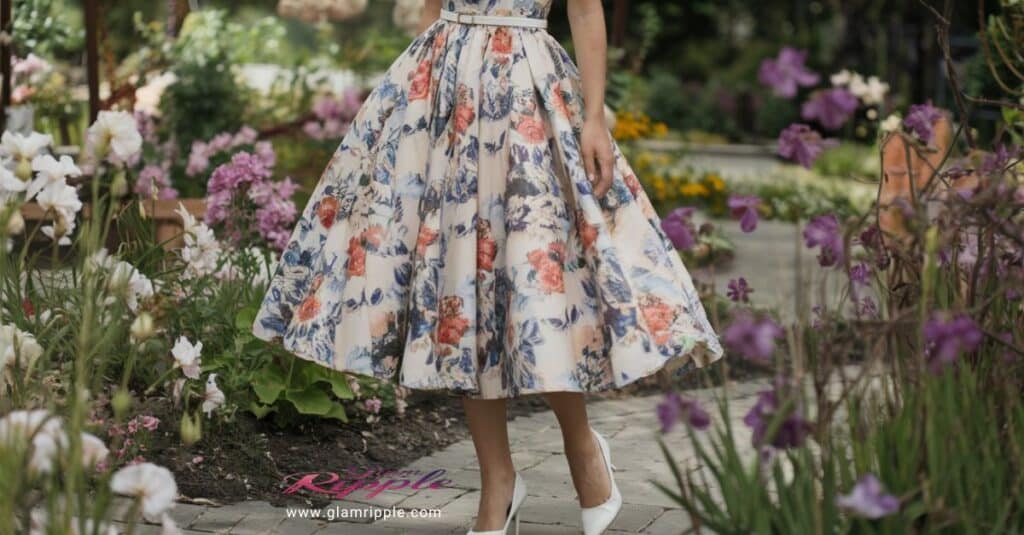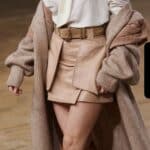Tea dresses are a timeless staple in the world of fashion, cherished for their vintage charm and effortless style. Whether you’re dressing up for a garden party or keeping it casual for a day out, these dresses offer unmatched versatility. A Guide to Wearing Tea Dresses: Everything You Should Know helps you navigate the ins and outs of styling this classic piece.
Known for their delicate prints and flattering silhouettes, tea dresses have become a go-to option for a variety of occasions. With A Guide to Wearing Tea Dresses: Everything You Should Know, you’ll discover how to embrace their classic appeal and elevate your wardrobe effortlessly.
This comprehensive guide will take you through everything you need to know about wearing a tea-length dress, from its origins to styling tips and body type considerations.
What Defines a Tea-Length Dress?
A tea-length dress is defined by its hemline, which typically falls between the knee and ankle—about mid-calf. This unique length makes it stand out from other dress lengths like mini, midi, and maxi dresses.
A tea-length dress is longer than a midi but shorter than a maxi, creating an elegant look that’s suitable for both formal and casual occasions.
Key Features:
- Dress length: Falls between the knee and ankle, usually mid-calf.
- Style options: Tea dresses can come in a variety of cuts, including ballerina tea dresses, sheath dresses, and wrap dresses.
- Feminine prints: Floral patterns, polka dots, and whimsical aesthetics are common in tea dresses.
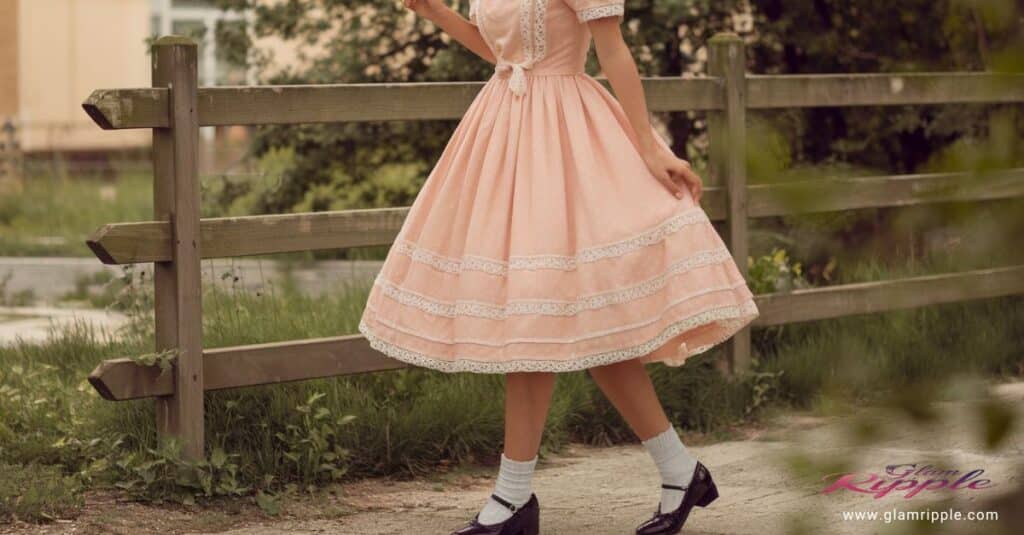
This length offers balanced proportions, elongating the legs and creating a flattering fit for various body types. The structure of the dress adds sophistication without being too formal.
Read more about Tea Dresses
A Guide To Wearing Tea Dresses: Everything You Should Know Why Is It Called a Tea Dress?
The name “tea dress” traces back to afternoon tea gatherings in the early 19th century. It was worn by women during social occasions, particularly when entertaining guests at home or attending casual tea parties.
The relaxed yet feminine style of the tea dress made it perfect for these daytime events, where formality wasn’t as stringent as during evening occasions.
This versatile piece was designed to be comfortable for social occasions, reflecting a shift from more structured clothing to soft fabrics with a relaxed fit. The tea dress was not meant to be as formal as an evening gown, but it still had enough polish to be elegant and fashionable.
Where Did the Tea Dress Originate?
The tea dress originated in Victorian England, evolving from the house dresses women wore while entertaining guests. During this period, women often changed multiple times a day depending on the event. The tea dress became a staple for informal gatherings where a blend of comfort and style was essential.
The dress rose to prominence in the 1940s and 1950s, thanks to the influence of Hollywood and fashion designers of the era. It became iconic for its vintage style, complete with feminine prints, floaty fabrics, and retro details.
Read more about 48 Dress Types
Modern versions of the tea dress take cues from this nostalgic look, often adding contemporary twists to create timeless fashion with modern styles.
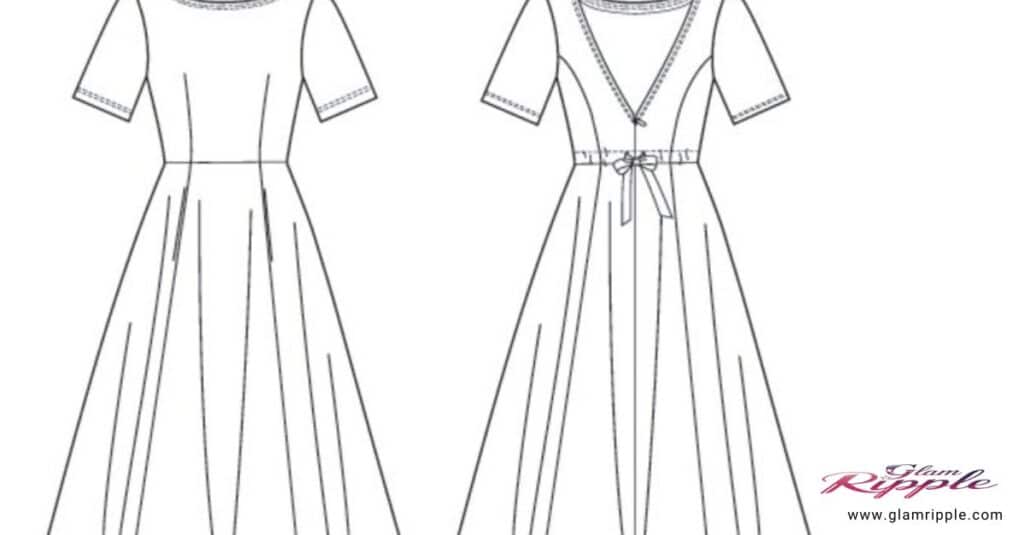
Tea Dress Timeline:
| Era | Description |
| Victorian Era | Originated as a casual house dress for tea parties |
| 1940s-1950s | Became popular in mainstream fashion |
| Present Day | Continues as a versatile staple for all occasions |
How Long Is a Tea-Length Dress?
The tea-length dress falls mid-calf, roughly 6-8 inches above the ankle. This length is perfect for showing off footwear while offering a sophisticated silhouette that is neither too long nor too short.
Visual Effects of Dress Length:
- Tea-Length: Offers a balanced silhouette, elongating the legs.
- Midi-Length: Falls just below the knee, typically shorter than tea-length dresses.
- Maxi-Length: Reaches the ankles or floor, offering more coverage.
Tea dresses are often associated with classic feminine prints like floral patterns and geometric patterns, which enhance their eye-pleasing print.
Do Tea-Length Dresses Make You Look Short?
Tea-length dresses can sometimes make shorter women appear even shorter due to the mid-calf hemline. However, with the right styling, they can elongate your frame and balance your proportions.
Tips to Avoid Looking Short in a Tea-Length Dress:
- Wear heels: Elevate your look and give the illusion of longer legs.
- Choose a tailored fit: Opt for a structured silhouette to avoid looking overwhelmed by fabric.
- Opt for a belt dress: A tie waist or belt can define your waist, creating an elongated leg look.
Tea-length dresses are generally flattering across body types with the right adjustments.
Are Tea-Length Dresses Flattering?
Tea dresses are universally flattering due to their ability to suit various body types. Their structured silhouette helps to highlight natural curves without being overly form-fitting.
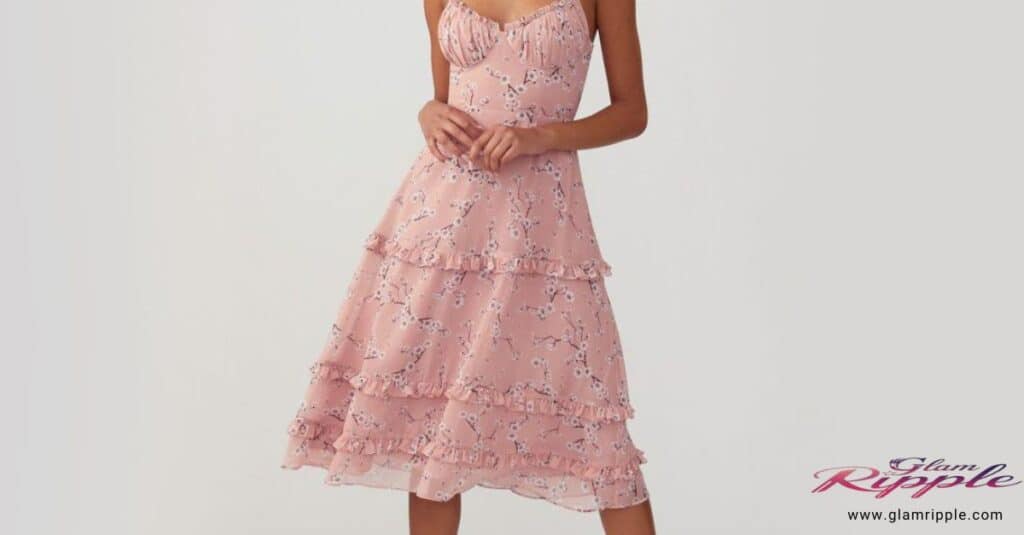
Flattering Fit for Different Body Types:
- Hourglass: Choose a belt dress or wrap dress to define your waist and accentuate curves.
- Apple: Look for relaxed fits with a tie waist to create balance.
- Pear: A structured dress with an A-line skirt balances the lower body.
The skirt hemline of a tea-length dress highlights the slimmest part of your calf, creating a sophisticated look.
Are Tea Dresses in Style Today?
Yes, tea dresses continue to be a popular choice for many occasions. In recent years, they’ve made a comeback in various fashion trends, from runway collections to casual wear. Celebrities often opt for tea dresses for red-carpet events, weddings, and daytime outings.
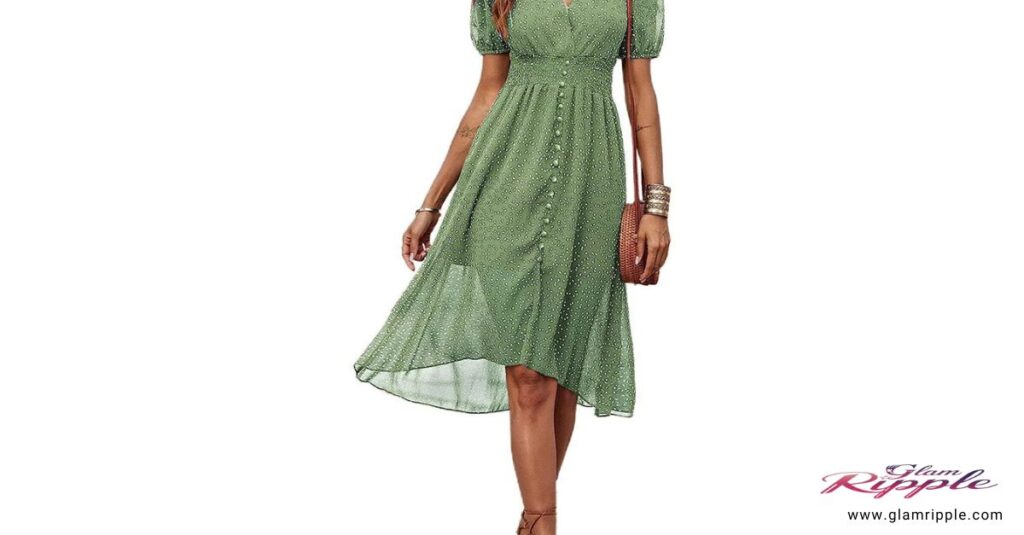
Modern designers often add asymmetrical hemlines, and floaty sleeves, or mix in elegant fabrics like silk fabric and velvet fabric to give the classic tea dress a contemporary twist.
Popular Modern Tea Dress Styles:
- Vintage tea-length dresses with retro details from the 1940s and 1950s.
- Casual tea dresses for daytime events like brunches and garden parties.
- Formal tea dresses for weddings and other special occasions.
When Should You Wear a Tea Dress?
Tea dresses are incredibly versatile and can be worn for both casual and formal events. The dress length and fabric often dictate how appropriate the tea dress is for a specific occasion.
A Guide To Wearing Tea Dresses: Everything You Should Know Occasions for Tea Dresses:
- Weddings: Opt for a formal tea dress made of silk fabric or velvet fabric. Great for both guests and the bridal party.
- Daytime Events: A casual tea dress with feminine prints like polka dots or floral patterns works well for garden parties or brunches.
- Cocktail Events: Tea dresses in elegant fabrics like satin or lace are perfect for semi-formal gatherings.
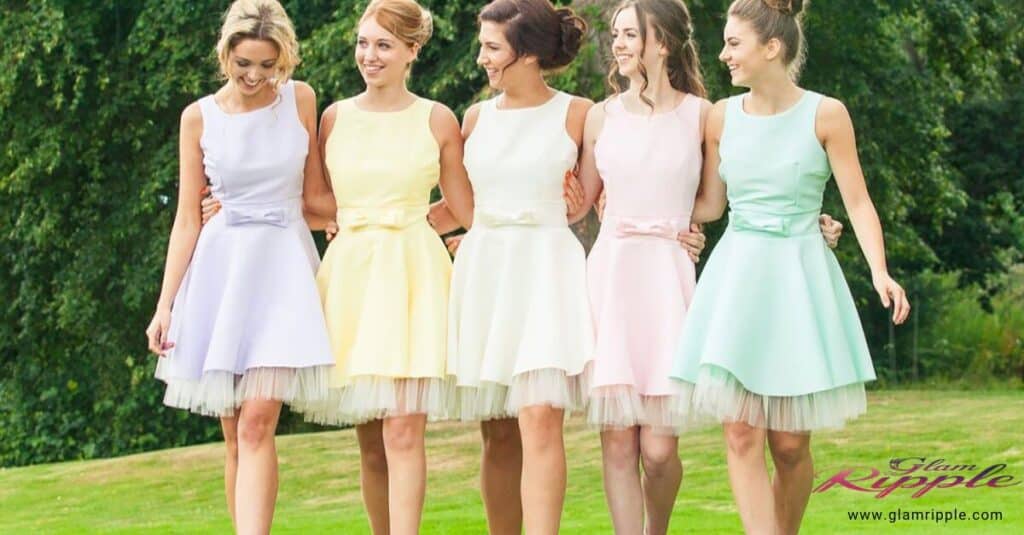
Tea dresses offer versatility across different social occasions, bridging the gap between casual and formal attire.
Are Tea Dresses Formal or Casual?
Tea dresses can be styled for both formal and casual occasions. The fabric, design, and accessories will determine the formality.
- Casual Tea Dress: Opt for feminine prints like polka dots or whimsical aesthetics for informal daytime events.
- Formal Tea Dress: Choose rich fabrics like velvet fabric or silk fabric for more formal settings like weddings or cocktail dresses.
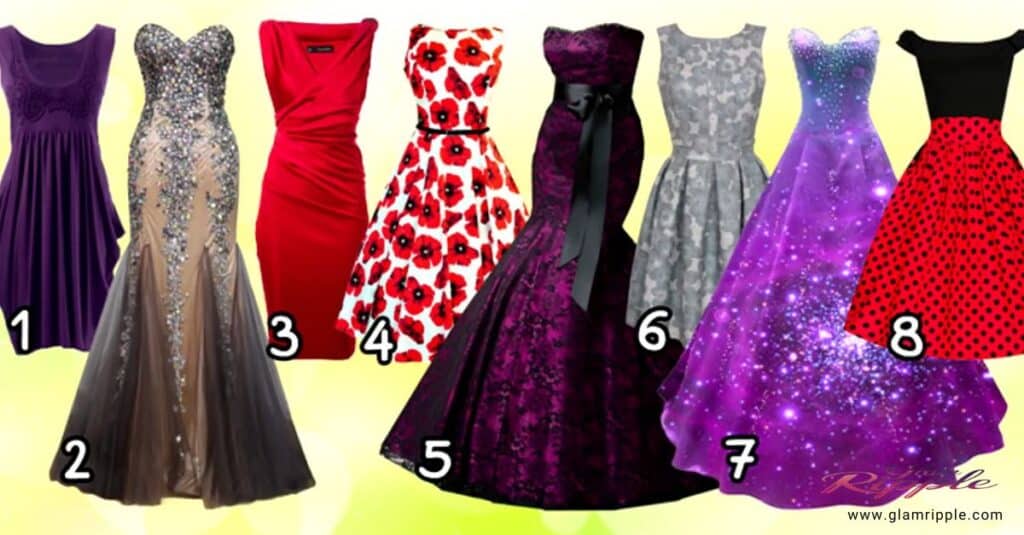
Accessories like heels, jewelry, and a structured handbag can elevate your tea dress for formal occasions.
Types of Tea-Length Dresses
There are several styles of tea dresses, each catering to different body types, preferences, and occasions.
Common Tea-Length Dress Styles:
- Ballerina Tea Dress: A fitted bodice with a full skirt, ideal for formal occasions.
- Wrap Dress: Ties at the waist, flattering for curvier body types.
- Sheath Dress: A slim, fitted design perfect for professional attire or polished, minimalist looks.
Each type offers a different vibe, whether you’re aiming for a relaxed fit for daytime events or a form-fitting option for special occasions.
How Are Tea-Length Dresses Different From Other Dresses?
Tea dresses stand out from other types of dresses due to their length, versatility, and timeless style. They are more casual than a cocktail dress but more formal than a typical casual dress.
Comparison of Dress Lengths:
| Dress Type | Hemline | Formality |
| Tea-Length | Mid-calf | Semi-formal |
| Midi Dress | Below knee to mid-calf | Casual to semi-formal |
| Maxi Dress | Ankle or floor-length | Formal |
Tea dresses offer a middle ground between daytime events and evening wear, making them incredibly versatile.
Tea-Length vs. Midi Dress: Key Differences
While both tea-length dresses and midi dresses share a similar hemline, the difference lies in the dress’s purpose and styling. Midi dresses typically stop right below the knee, making them more casual, while tea dresses offer more elegance with their mid-calf length.
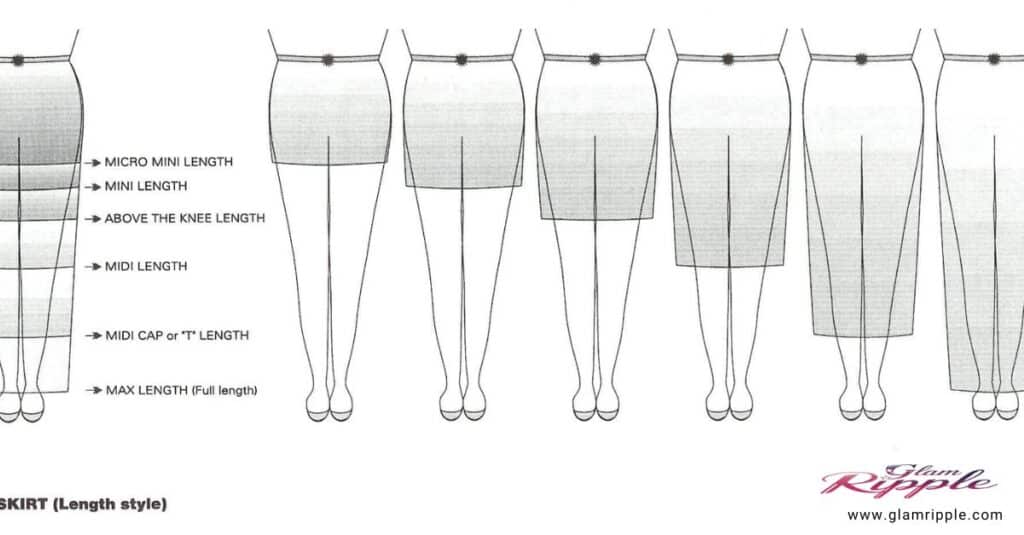
Styling Differences:
- Midi Dress: Works best for casual events and can be paired with flats for a more relaxed look.
- Tea-Length Dress: Offers a more polished, semi-formal style, perfect for special occasions like weddings
or formal gatherings.
When choosing between the two, consider the event and the desired sophisticated look. A tea-length dress is a safer bet for more polished, put-together outfits.
Conclusion
A tea-length dress is the ultimate versatile piece, blending elegance with everyday wearability. Whether you’re looking for a casual tea dress for a daytime outing or a formal tea dress for a wedding, tea dresses offer a timeless, flattering silhouette that works for a wide range of body types and occasions.
With their rich history, cultural significance, and modern adaptability, tea dresses remain a go-to choice for those seeking style, comfort, and class.

Mickel Lee is an experienced fashion blogger at Glamripple, with a keen eye for style and a passion for sharing the latest trends. With years of experience in the fashion industry, Mickel offers readers insightful tips, expert advice, and creative inspiration to elevate their style. His articles blend practicality with flair, making fashion accessible and exciting for everyone.

